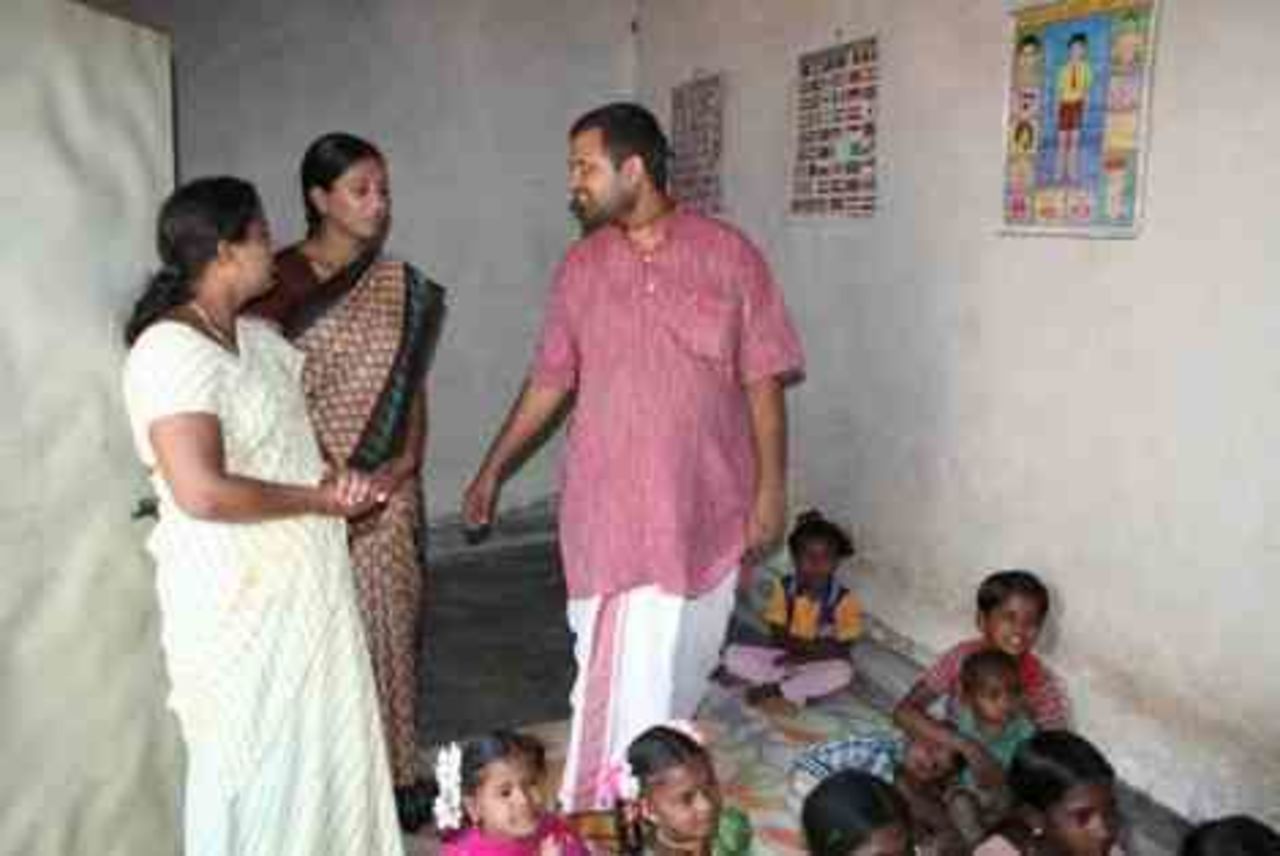15. März 13

A Remarkable Grassroots Initiative in Education
One of our site visits in India was very special for the participants.
We visited the school of Anandamaya Dasa and his wife in the outskirts of Bangalore, which they name “Slum-School”. Ananda earns his money as a priest, they run the school unsalaried and provide everything from their own money and from donations. Located in a presently built-up area with nice four-story apartment houses, their school is the place where up to 40 children from 5 to 15 are able to acquire some basic competencies which are necessary to enter governmental schools later on: washing hands, sitting still, listening to what the teacher says, drawing, using the toilet, plus some fundamental intellectual skills like speaking the regional language properly. These kids also live in this area, but not in the new apartment houses. Their parents are construction workers who live near the construction sites in makeshift tents made from old tarpaulins. Some of the children are orphans and are living alone.
The school has one classroom only, which measures about 6 square meters, a tiny little yard, two toilets and a small office. No electricity and no windows are provided. The children sit on the floor, and they have nearly no materials for work. The main reason for them to visit the school is the daily meal they get there. They come – and are sent by their parents – because of the food, but experience learning and playing while being there. Some of them have to take care of their baby siblings and bring them along. This is not allowed in formal schools, so their parents will not let them go there. Many parents would prefer their kids to earn money instead, thus it is an effort to convince them otherwise. One of the main benefits for the kids is that even this small organisation gives them a rudimentary structure. They get a break from their chaotic lives outside, and so they acquire the capacity to do and learn something different and new.
Ananda and his wife have done this work for the last nine years. Some of their former students already attend college. The workers move with the construction sites, so they had to move the school also to stay near the children. Now they want to move again, way out of the growing city into the slum areas, and start a boarding school to enable more parents to send their kids.
We are deeply impressed by the work they do, and what we can learn about change from them: Sometimes the best thing to do is just to begin, even if it seems like a drop in the bucket. We will definitely stay in contact with them!


